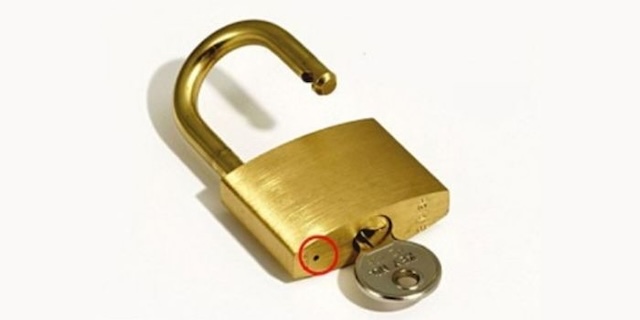If you’ve ever looked closely at a padlock, you might have noticed a small hole at the bottom near the keyhole. This tiny hole serves an important function, but it’s often overlooked or misunderstood. In this article, we’ll explore what this hole is, who came up with the idea, common misconceptions about it, and its practical benefits.
What Is This?
The small hole at the bottom of a padlock is a drainage hole. It’s designed to allow water, especially rain or condensation, to escape from inside the lock. This prevents moisture buildup, which could lead to rusting of the internal components. In colder climates, this hole is also essential in preventing the lock from freezing during winter, as water trapped inside could expand and break the lock when it freezes.

Who Invented This?
While it’s hard to attribute the invention of this small feature to a single individual, padlocks themselves have been around for centuries, evolving in design and function over time. The drainage hole became a standard feature in modern padlocks as manufacturers recognized the need for better protection against the elements, particularly in outdoor environments where locks are exposed to rain, snow, and fluctuating temperatures. Major lock manufacturers, such as Master Lock and ABUS, have long incorporated this feature to extend the lifespan of their products.

Common Misconceptions About the Small Hole
One of the most common misconceptions about this small hole at the bottom of a padlock is that it’s just an extra manufacturing defect or a place for inserting tools to pick the lock. This is not true. The hole is intentionally designed and placed for practical purposes. Some people also mistakenly believe that it has no real function, but its role is vital in keeping the lock functional, especially in harsh conditions.
Another misconception is that the hole is meant for inserting a special key or tool to open the lock, which is also incorrect. The actual function of the hole has more to do with maintenance and durability.

What Are Its Real Uses?
Here are the practical benefits of the small hole in the bottom of padlocks:
- Preventing Water Accumulation: The primary function of the hole is to allow water to drain out, preventing moisture from accumulating inside the lock. Without this hole, water could collect and cause internal components to rust, shortening the lifespan of the lock.
- Preventing Freezing: In colder climates, water inside the lock could freeze and cause damage. The drainage hole helps prevent this by allowing water to escape before it freezes, keeping the lock functional even in freezing temperatures.
- Easy Maintenance: You can use the small hole for maintenance purposes. If your padlock starts to get sticky or difficult to open, you can apply a few drops of oil or lubricant into the hole. This helps keep the internal mechanism smooth and functioning properly.
- Extending the Lifespan of the Lock: By preventing rust, freezing, and other weather-related damage, this small feature significantly extends the life of the padlock, especially for those used outdoors or in moist environments.

Conclusion
The small hole at the bottom of padlocks might seem like an insignificant detail, but it serves multiple practical purposes. From draining out water and preventing freezing to allowing for easy maintenance, this tiny hole plays a big role in ensuring the longevity and functionality of the lock. Next time you use a padlock, remember that this small feature is designed to keep your lock working smoothly, no matter the weather conditions.


